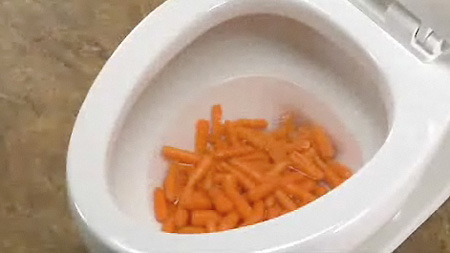Can One to Dispose of Food Waste in the Toilet?
Can One to Dispose of Food Waste in the Toilet?
Blog Article
Were you trying to locate critical info involving Is it safe to flush food (especially rice) down the toilet??

Intro
Lots of people are commonly faced with the predicament of what to do with food waste, especially when it pertains to leftovers or scraps. One usual question that occurs is whether it's all right to purge food down the commode. In this short article, we'll explore the reasons that individuals may think about flushing food, the repercussions of doing so, and different approaches for appropriate disposal.
Reasons that individuals might take into consideration purging food
Lack of understanding
Some individuals might not be aware of the prospective harm triggered by purging food down the toilet. They may incorrectly think that it's a harmless method.
Ease
Purging food down the commode might seem like a fast and easy service to dealing with undesirable scraps, particularly when there's no close-by trash can available.
Negligence
In some cases, people may simply pick to flush food out of sheer laziness, without taking into consideration the consequences of their activities.
Effects of flushing food down the bathroom
Environmental influence
Food waste that ends up in waterways can add to air pollution and harm marine ecological communities. Additionally, the water used to purge food can stress water sources.
Pipes problems
Flushing food can lead to clogged up pipelines and drains pipes, creating expensive pipes repair services and hassles.
Types of food that must not be flushed
Coarse foods
Foods with coarse structures such as celery or corn husks can obtain tangled in pipelines and create clogs.
Starchy foods
Starchy foods like pasta and rice can soak up water and swell, causing obstructions in pipes.
Oils and fats
Greasy foods like bacon or food preparation oils must never ever be flushed down the toilet as they can strengthen and create obstructions.
Appropriate disposal techniques for food waste
Using a waste disposal unit
For homes furnished with waste disposal unit, food scraps can be ground up and flushed with the pipes system. Nevertheless, not all foods appropriate for disposal in this fashion.
Recycling
Specific food packaging materials can be reused, reducing waste and decreasing environmental influence.
Composting
Composting is a green way to deal with food waste. Organic materials can be composted and utilized to improve dirt for gardening.
The relevance of appropriate waste monitoring
Minimizing environmental injury
Appropriate waste monitoring techniques, such as composting and recycling, help decrease air pollution and preserve natural resources for future generations.
Protecting pipes systems
By avoiding the technique of flushing food down the toilet, home owners can stop expensive plumbing repair work and preserve the honesty of their pipes systems.
Conclusion
To conclude, while it might be appealing to purge food down the commode for ease, it is necessary to understand the prospective consequences of this action. By embracing correct waste administration methods and throwing away food waste sensibly, people can contribute to much healthier pipes systems and a cleaner environment for all.
FLUSH FOOD DOWN THE TOILET?
FLUSHING FOOD CAN CAUSE BLOCKED DRAINS IN YOUR HOME
All of the plumbing fixtures in your home are connected to the same sewer pipe outside of your home. This outdoor sewer pipe is responsible for transporting all the wastewater from your home to the Council sewer mains. Even small pieces of food that go down the kitchen sink can cause problems for your sewer. It should therefore be obvious that flushing larger bits of food, such as meat, risks a clog in either the toilet itself or the sewer pipes. Flushing greasy food is even more problematic because oil coagulates when it cools, coating the interior lining of your pipes.
THE TOILET IS NOT A BIN
Food isn’t the only thing that people shouldn’t be flushing down the toilet. People use the toilet to dispose of all kinds of things such as tampons, makeup wipes, dental floss, kitty litter and even underwear. Water goes to great lengths to educate residents about the high costs and stress placed on wastewater treatment systems simply from people flushing the wrong stuff down the toilet. It costs taxpayers millions of dollars each year, and homeowners thousands in blocked drain repairs.
FLUSHING FOOD IS A WASTE OF WATER
Flushing food is a waste of our most precious resource - water. In June this year Level 1 water restrictions were introduced to protect water supply from drought conditions. Much of New South Wales continues to be affected by prolonged drought with recent figures revealing up to 97 per cent of the state remains in drought. Depending on whether you have a single or dual flush toilet, every single flush uses between five and 11 litres of water. In the current climate this is a huge amount of water to be wasting on flushing food that should be placed in the bin (or better yet, the compost).
https://www.jabplumbingsolutions.com.au/blog/can-you-flush-food-down-the-toilet

I'm just very interested by and I really hope you enjoyed reading our post. Sharing is caring. Helping people is fun. I am grateful for being here. Return soon.
Get An Estimate Report this page